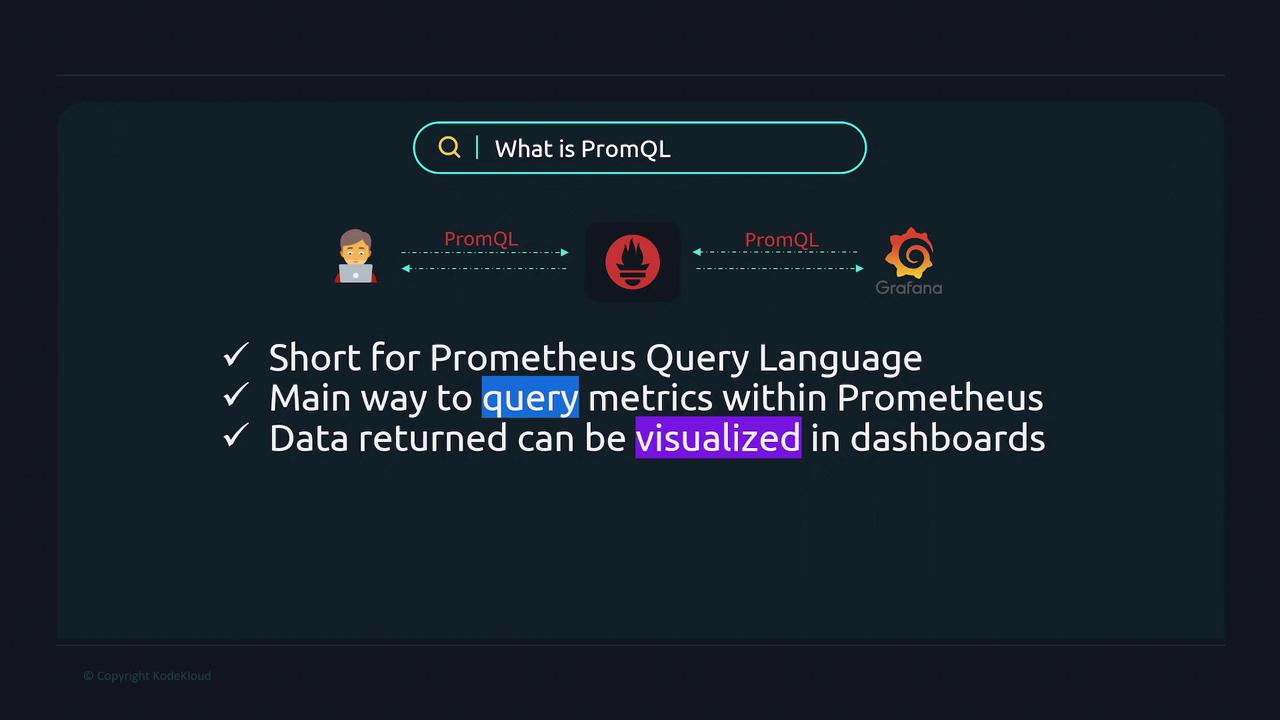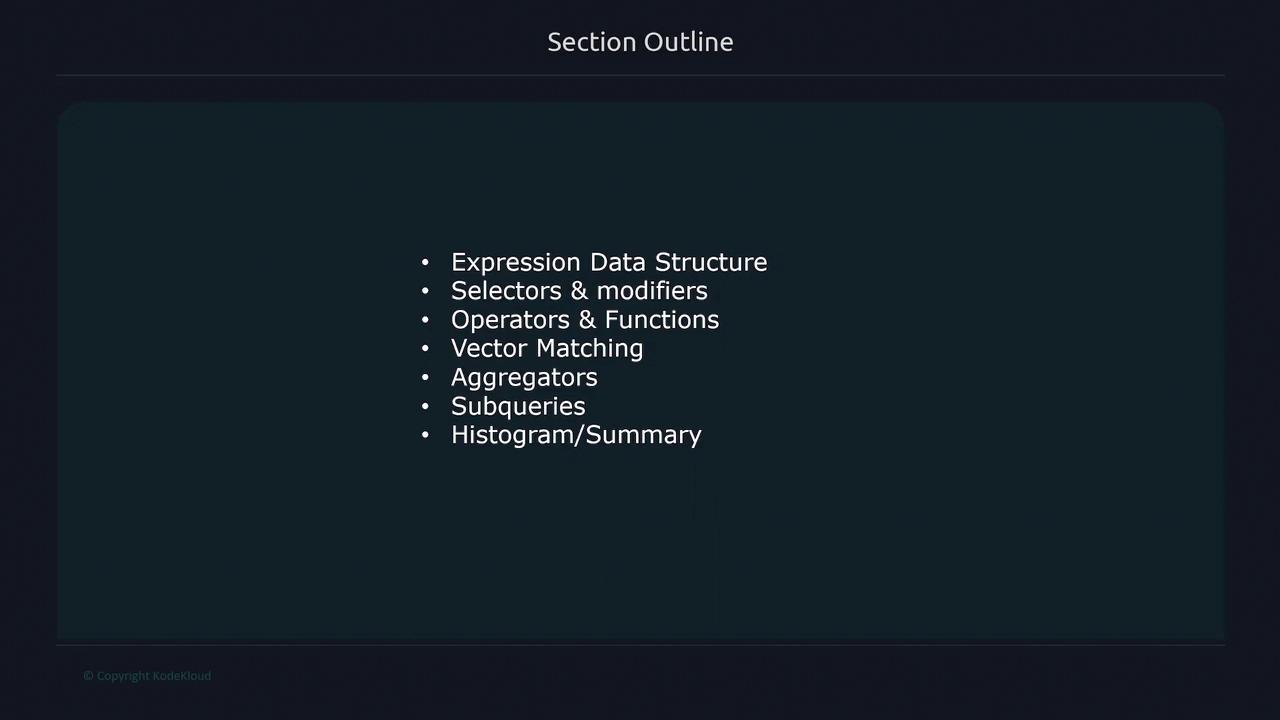Prometheus Certified Associate (PCA)
PromQL
Introduction
In this lesson, we explore PromQL (Prometheus Query Language), the primary method for querying metrics within Prometheus. Using a PromQL expression, you send a request to the Prometheus server and receive data that can be visualized on dashboards—whether using Grafana or Prometheus's built-in visualization tools.

Additionally, PromQL is employed to construct alerting rules, alerting administrators when pre-set thresholds are exceeded. In this lesson, we cover topics such as:
- Expression data structures and their returned types
- Selectors and modifiers for retrieving specific data
- Operators and functions
- Vector matching
- Aggregations in Prometheus
- Subqueries
- Advanced usage of histograms and summaries

Data Types Returned by PromQL
When you run a PromQL expression, the Prometheus server returns data in one of four types:
- String: A simple text value (currently unused in queries).
- Scalar: A floating-point number (e.g., 54.743 or 127.43).
- Instant Vector: A set of time series where each series contains exactly one sample, all sharing the same timestamp.
- Range Vector: A set of time series where each series contains multiple data points across a specified time interval.
Note
PromQL's type system is designed to efficiently support real-time metrics querying and visualization. Understanding each type helps you choose the right queries for your monitoring needs.
String and Scalar Types
A string is simply a text value and is not used for metric queries in Prometheus. In contrast, a scalar is a floating-point number that can represent values like 54.743. Scalars are excellent for calculations and can be paired with other data types in binary operations.
Instant Vectors
An instant vector returns a set of time series, with each series providing one sample at a single, consistent timestamp. Consider the following example query, which retrieves the metric "node_cpu_seconds_total":
$ node_cpu_seconds_total
node_cpu_seconds_total{cpu="0", instance="server1"} 258277.86
node_cpu_seconds_total{cpu="1", instance="server1"} 448430.21
node_cpu_seconds_total{cpu="0", instance="server2"} 941202.32
node_cpu_seconds_total{cpu="1", instance="server2"} 772838.83
In this example, Prometheus identifies the metric along with its unique label combinations, resulting in four time series. The key characteristic here is that each time series is sampled at the same moment. For instance:
$ node_cpu_seconds_total
node_cpu_seconds_total{cpu="0", instance="server1"} 258277.86 March 3rd 11:05AM
node_cpu_seconds_total{cpu="1", instance="server1"} 448430.21 March 3rd 11:05AM
node_cpu_seconds_total{cpu="0", instance="server2"} 941202.32 March 3rd 11:05AM
node_cpu_seconds_total{cpu="1", instance="server2"} 772838.83 March 3rd 11:05AM
Each line represents a sample taken at the identical timestamp, ensuring consistent data for snapshot analyses.
Range Vectors
Unlike instant vectors, range vectors return multiple data points over a specified time window. By appending a [3m] modifier, the query instructs Prometheus to return data for the past three minutes:
$ node_cpu_seconds_total[3m]
node_cpu_seconds_total{cpu="0", instance="server1"} 674478.07 March 3rd 08:05AM
node_cpu_seconds_total{cpu="0", instance="server1"} 674626.76 March 3rd 08:06AM
node_cpu_seconds_total{cpu="1", instance="server2"} 884597.02 March 3rd 08:05AM
node_cpu_seconds_total{cpu="1", instance="server2"} 540071.18 March 3rd 08:06AM
node_cpu_seconds_total{cpu="1", instance="server2"} 944799.49 March 3rd 08:07AM
Here, each time series includes multiple samples over the selected time range, providing a comprehensive view of metric trends. For example, one series might show values for 8:05, 8:06, and 8:07 AM, which is essential for analyzing behaviors over time.
Warning
Ensure you use the correct vector type based on your requirements. Instant vectors are useful for point-in-time snapshots, while range vectors are vital for understanding trends and diagnosing issues over time.
Watch Video
Watch video content